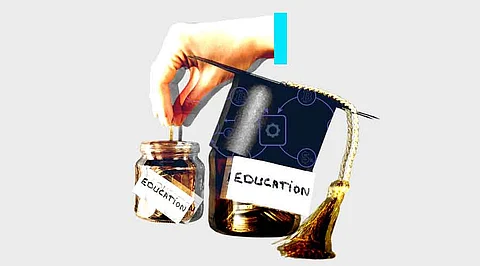

A network of blockchain-based apps known as DeFi (decentralized finance) offers a variety of financial services that are comparable to those offered by conventional financial institutions. Smart contacts are used to construct decentralized finance apps, which automate and carry out financial transactions. This contrasts with conventional financial services, which are managed by centralized third parties.
In the context of DeFi financing, a DeFi loan can be defined. Decentralized, frictionless lending using DeFi enables you to lend or borrow money while maintaining complete control over your money. DeFi loans let you borrow money with your crypto assets serving as security. The value of the collateral you supply must, in theory, be more than or equal to the amount of the loan you wish to get. A DeFi loan must continue to be over-collateralized by a certain proportion, as required by the DeFi lending protocol, and this is the responsibility of smart contracts. The majority of DeFi lending protocols reward borrowers with governance tokens when they take out a loan in order to encourage them. DeFi systems frequently employ this tactic to draw liquidity and reward users that contribute to the ecosystem. DeFi loans are advantageous to investors because they allow them to make money by lending their crypto assets to borrowers. Additionally, digital assets are being automatically distributed to borrowers using smart contracts. In this approach, a lender may store digital assets in lending pools to earn interest while a borrower can borrow them on a peer-to-peer basis.
DeFi lending gives you the option to borrow money against your cryptocurrency assets to pay off your student loans. Since your crypto tokens will be used as debt collateral for a money loan, you may avoid paying capital gains tax on sold crypto assets because you don't need to sell them in order to make money. Additionally, to earn interest, you may put your tokens—typically stablecoins—into lending pools. When the time is right, you may convert the interest income you make into fiat money and utilize it to pay off your student loan. So, all you could need to pay off your college loans is a crypto wallet and some invested tokens. You are also given self-custody of your assets with DeFi loans. By doing this, you have more control over your own assets than you would if you took out a traditional loan with all of its restrictions. In addition, compared to traditional financial institutions and their layers of red tape, DeFi lending methods are speedier when disbursing loans to borrowers.
You ought to be cognizant of some hazards while using a DeFi loan to pay down your college debt.
The APR for DeFi lending systems is often variable since it varies with the supply and demand of the crypto assets. In other words, when the APR rises due to a scarcity of lenders, DeFi loans become expensive. There are liquidation thresholds in the DeFi lending procedures. When the process is followed, the collateral is sold to pay off a borrower's obligation. You now have the option of choosing to forgo the fine by paying back a portion of your loan in Dai or adding extra security. The system will constantly sell the collateral to pay off the loan if you don't do one of the two things and the price of ETH keeps falling. The security of users' crypto funds has been jeopardized by mistakes in the underlying smart contract software. DeFi lending procedures have previously been exposed to security threats and breaches due to system vulnerabilities, which can result in a total loss of deposited assets.
Join our WhatsApp Channel to get the latest news, exclusives and videos on WhatsApp
_____________
Disclaimer: Analytics Insight does not provide financial advice or guidance. Also note that the cryptocurrencies mentioned/listed on the website could potentially be scams, i.e. designed to induce you to invest financial resources that may be lost forever and not be recoverable once investments are made. You are responsible for conducting your own research (DYOR) before making any investments. Read more here.
